Race Proven Technology
In 2019, under the leadership of John Marking and Bobby Smith, the FOX Factory Motorsports Group was formed and the Racing Applications Development (RAD) program was reestablished. Products, components, and technologies that successfully complete the RAD cycle often find their way into FOX Aftermarket and OEM vehicle product lines.
The first RAD product focus for the new group was determined – TT Live Valve. A platform vehicle was acquired for initial development and the Motorsports team worked directly with the Advance Development Group (ADG) and Powered Vehicle Group (PVG) engineers to establish the foundation of TT Live Valve.
TT Live Valve was designed and further developed within the Motorsports Group in collaboration with FOX racers Rob MacCachren, Cameron Steele, and Justin Lofton. In October of 2020, in only its second race, TT Live Valve took its first win with Lofton in his #41 FOX Trick Truck nicknamed Fury, solidifying the technology with a premier class win in off-road racing.
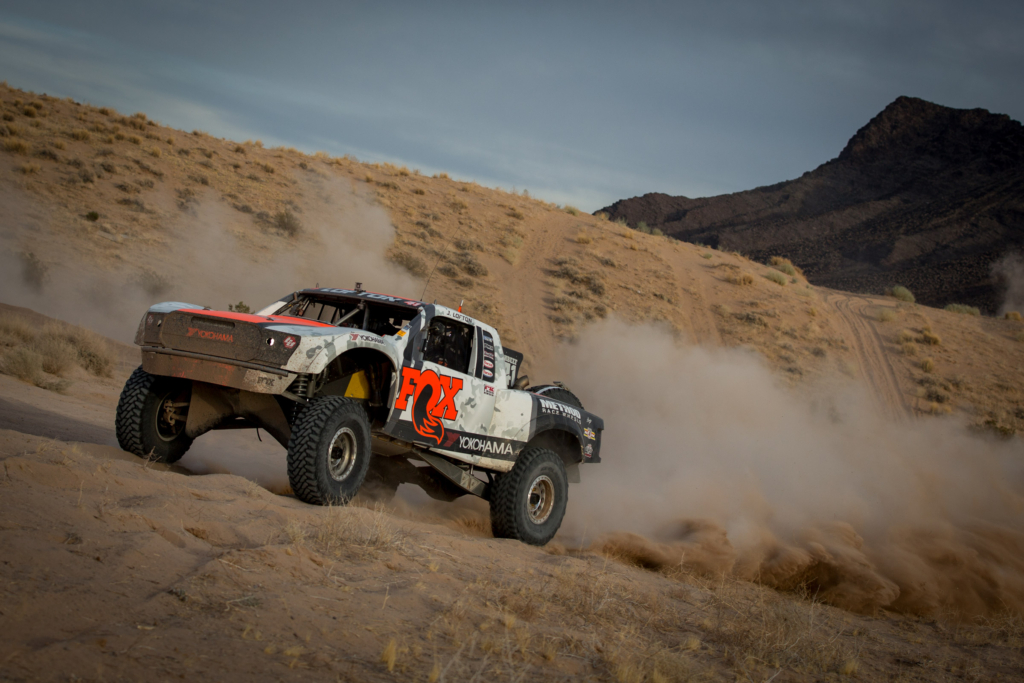
That win only marked the beginning for TT Live Valve, which is slated for further RAD development. The data and knowledge gained in the process of this project is also shared with the ADG team as both groups work in parallel and collaboration on the next iterations of suspension technology.
In the words of founder Bob Fox, “we’re never done.”
What is RAD?
At its core, the RAD program revolves around these key missions:
- Innovation of performance-defining products and technologies in the spirit of competition.
- Testing our products and technologies through our racers’ rigorous abuse in extreme environments and conditions.
- Refining and perfecting our products and technologies by exceeding the specifications required by our racers.
- Proving the viability and solidifying the superiority of our products and technologies through race-winning results.
“The RAD program is the core principle FOX was built on,” FOX Director of Motorsports Bobby Smith said. “RAD is critical for the racing industry because in racing nothing ever stays the same. You’re either driving progress or playing catch up; adapt or get left behind.
“FOX chooses to push progress through our RAD program. Our non-racing end users benefit from this significantly as we are able to test and refine technologies in an extreme environment and offer them a high-performance product.”
Development cycle of RAD products
According to Smith, the first step in development is to define the goal and/or problem; sometimes the problem is obvious: shocks are overheating.
“Typically there isn’t an obvious problem and we need to create an abstract objective,” he explained. “As in the case of TT Live Valve, the project started off as a theoretical idea. The team conceptualized how electronic suspension would improve performance.
“From there the design requirements needed to achieve the performance goals are defined.”
Read “Origins of FOX Live Valve“
As an example, compression and rebound control is needed or XX amount of force control range is needed.
“Next, the engineers start designing components in CAD,” Smith said. “Before the first prototype is made, we will have design reviews, 3D print parts for fitment, etc. The concept prototype is produced, and we begin lab testing on dynos and other testing equipment.
“The lab testing is crucial as it allows us to make fast design iterations to maximize design intent and performance in a controlled setting. Once we have a good understanding of the technology and believe we have met the goals we install it on race car for real word testing to confirm our work.”
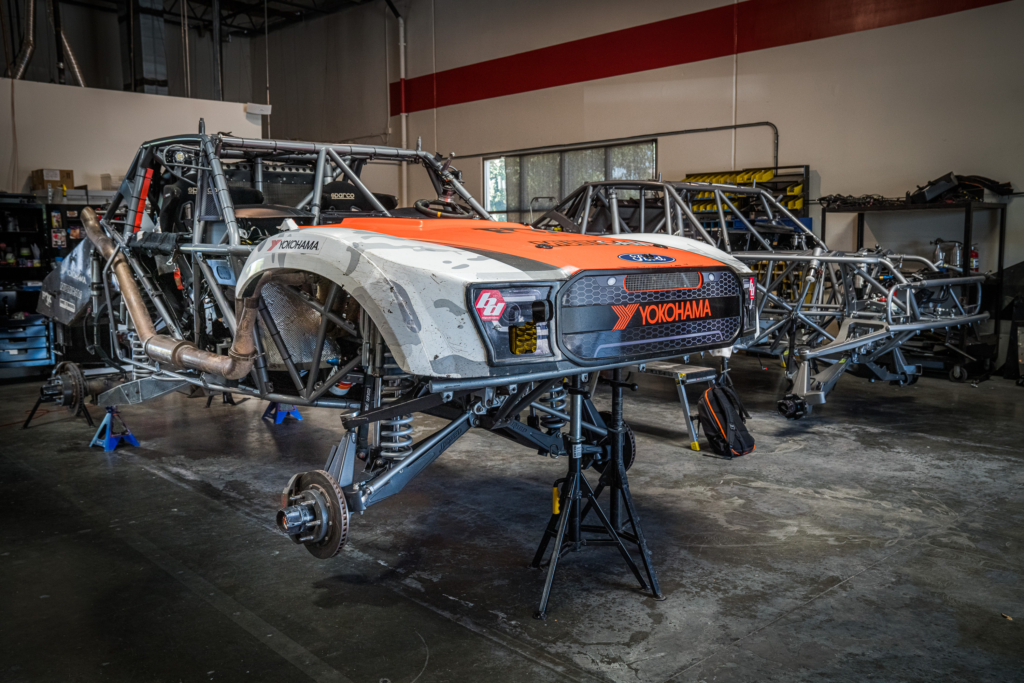
“From there the development continues with collecting data from lab and vehicle testing,” he added. “Once the project has achieved all of the goals and we can successfully apply the technology to more vehicles we will begin transitioning the product for prototype RAD phase to production phase.”
In engineering, the fundamental goal is to find solutions to problems. The driving factor in the development of any RAD product is to win races and the first steps in accomplishing that mission are to identify any limitations and determine where we can increase performance.
Faster, further, first
“In terms of suspension and in the context of racing, the `problems’ usually center around how we can enable our racers to go harder and faster,” FOX Motorsports Program Manager Bryan Harrold explained. “Key target areas include durability (can the product withstand over 1,000 miles of abuse through various extreme conditions?), superior and consistent performance (cavitation and heat mitigation), improved handling characteristics (predictability and comfort, confidence-inspiring tuning, reduction of driver fatigue), or other design factors (lighter/stronger/faster, new vehicle platforms or geometry, technological advancements, rule restrictions, packaging limitations, etc.).”
“Most prototype product that is born within the RAD program will target one or more of those areas. Once that target is defined, initial development starts as any typical product might: engineers take to the drawing board and develop CAD models to kick off prototype parts in small batch quantities.
“The highlight of our RAD development cycle is in the testing phase,” Harrold said. “This cornerstone of the RAD program revolves around direct collaboration with our top athletes to push our products and technologies to the breaking point in hope of redefining their own limits. Our athletes’ demanding specifications and critical feedback are integral in the development process, and ultimately, it’s their performance and results that prove the viability of a product before it goes to production, if it ever makes it that far.”
According to Harrold, RAD product testing often commences with limited tuning sessions in controlled testing environments and may escalate to practice use or pre-running, but one of the ultimate proving grounds for suspension is off-road racing.
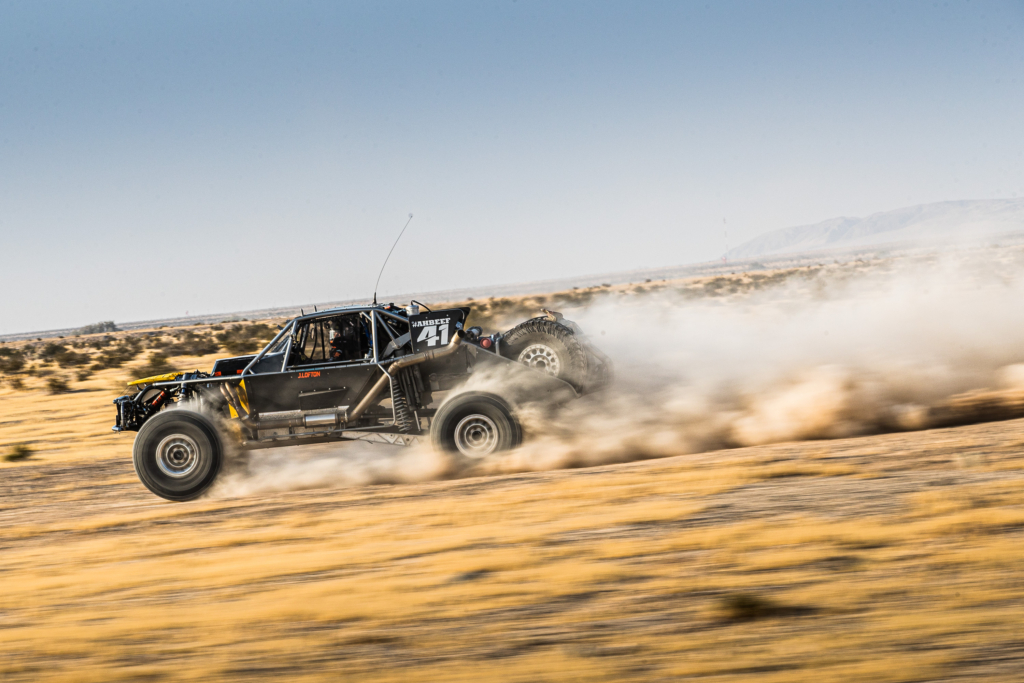
“Nowhere else will suspension products see the same level of extreme conditions found in off-road racing condensed in such a short amount of time – temperatures ranging from below freezing to over 120° F, snow, water, sand, mud, rocks, graded roads to technical goat trails, miles of 4-foot-deep bumps with speeds in excess of 100 mph,” he explained. “Race formats range from hour long multi-lap sprints to 18+ hour point-to-point endurance races without stopping or even multi-day or week staged rallies. Throughout those races, shocks are capable of sustain shaft speeds of over 430 in/sec, 10,000 lbs. of force, and fluid temperatures of up to 450° F.”
FOX’s most visible and successful RAD projects
While TT Live Valve is the most recent success story from the RAD program, it’s definitely not the first. The earliest iterations of RAD product development go back to FOX Factory’s beginnings in the early 1970s with Bob Fox developing the first Airshox in motocross for the likes of Roger DeCoster, Brad Lackey, Kent Howerton, Pierre Karsmakers, and Marty Smith.
RAD development was responsible for FOX’s Twin Clicker shocks and entry into the off-road market with Roger Mears, winning the 1979 Baja 1000. That was quickly followed by introduction into the road racing circuit with a 1982 CART World Series championship and Tom Sneva’s win at the Indy 500 in 1983.
Perhaps one of the most notable RAD technologies to be developed was John Marking’s Internal Bypass design in the late 1990s. Initially designed to provide position-sensitive damping found in external bypass shocks to race cars limited to a single shock per corner, FOX-patented Internal Bypass was introduced on the 2010 Ford F-150 SVT Raptor and has been included as stock equipment on every Ford F-150 Raptor model since as well as the entire Toyota TRD Pro model lineup, Jeep Gladiator Mojave, and numerous UTVs.
Read “New 2021 Ford Raptor: Experiencing Aggressive Control And Stability With 3.1 Live Valve“
In 2006, the FLOAT X EVOL was introduced and was the first air shock to win for the snowmobile division. In 2009, the FLOAT 2 followed, becoming the first snowmobile of Yamaha’s production line fully suspended by air thanks to that racing influence. FOX FLOAT technology is still widely used in snowmobiling applications.
Up until the last decade, unlimited trucks (TT) were actually limited by their suspension, especially in the infamous whoops of San Felipe where they would have to slow their pace to finish the race. In 2011, FOX tapped the #76 FOX TT driver Jesse Jones to help develop a shock package through the RAD program that would deliver fade-free performance through the miles and miles of relentless whoops.
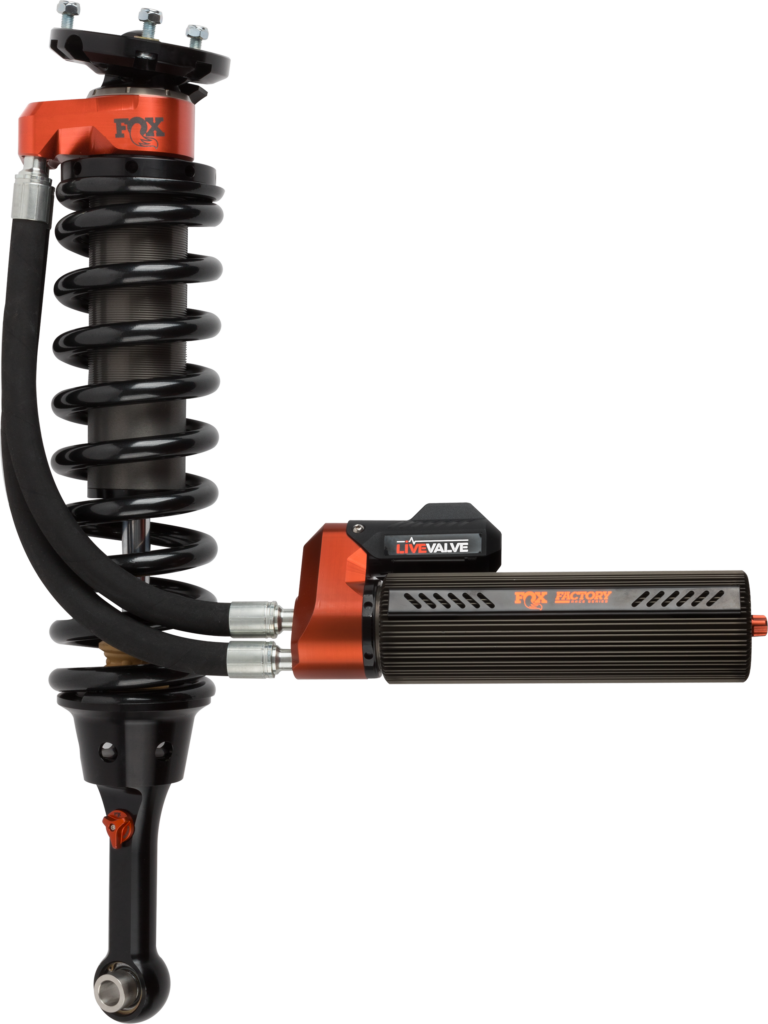
Code-named “Cactus Cooler” during the RAD process, the FOX-patented “External Cooling System” (ECS) was successful in reducing shock fluid temperatures by over 100° F during the race, allowing for all-new level of performance and faster pace in unlimited off-road racing. That external bypass-based cooling system has since been refined as the ECS2 through RAD program continuous improvements in effort to make it lighter and more efficient.
Both the ECS and ECS2 have racked up a multitude of premier race victories and championships since their inception nearly a decade ago. That success and efficiency have also transcended racing into the aftermarket where the ECS2 can be found on the Factory Race Series upgraded shock package for Ford F-150 Raptors (including on some vehicles straight from the dealer lot like the Shelby Baja Raptor). The ECS2 has also influenced additional FOX RAD technologies like the recirculating and finned reservoirs that have mirrored that transition into aftermarket on Jeep products.
But it’s not just major FOX components or technologies that find their roots in racing and the RAD development cycle. Smaller shock components like high temp and redundant seal pack systems, high flow pistons, lined spherical bearings, stainless steel shafts, internal floating pistons (IFP) and other components found in many of our aftermarket and OEM products were all born in racing and can still be found on race vehicles today. Even our proprietary JM92 suspension fluid, found in nearly all of our truck and SUV shocks, was specifically formulated to withstand the extreme shock temperatures seen in racing, not to mention being certified mil-spec for defense suspension use.
Advance Design Group – what it does
While the RAD philosophy is our heritage and what FOX Factory, Inc. was founded on with racing at its core, the Advance Development Group is our connection to the future in the digital era. Both Motorsports and ADG operate independently to broaden our progress in product and technological development, but we also work collaboratively to bolster our collective efforts.
“A prime example of this is our semi-active Live Valve technology,” Harrold said. “Live Valve did not start with the RAD product cycle but was developed as a special project for mountain bikes by the ADG group that quickly evolved into OEM UTV (Polaris RZR) and Truck (Ford Performance F-150 Raptor) platforms.
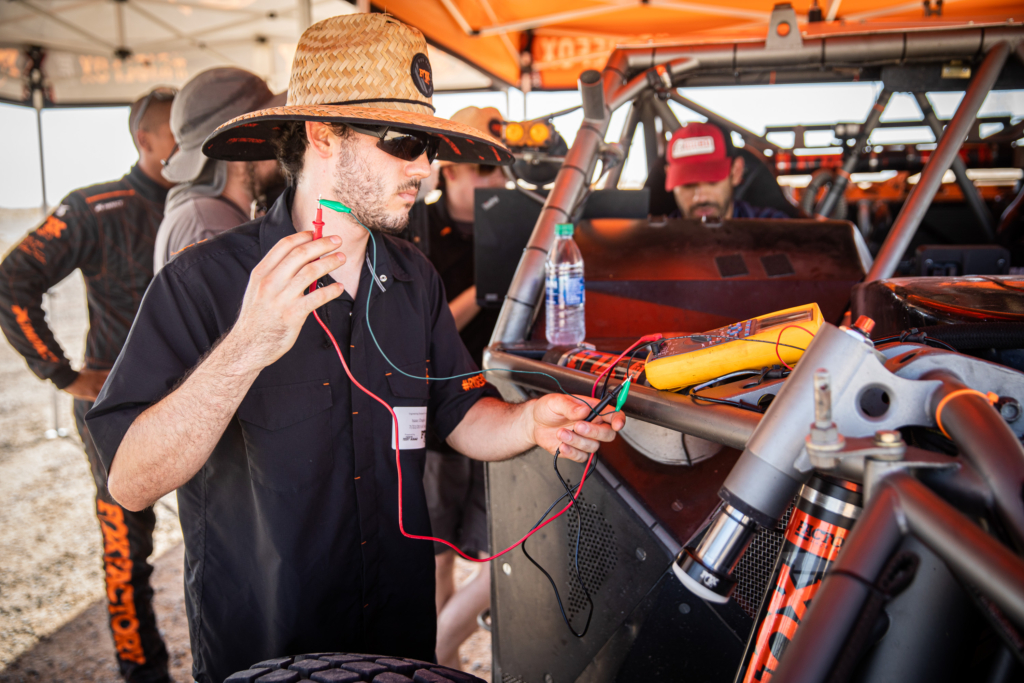
“While Live Valve wasn’t born in racing, it was proven through it by Wayne and Kristen Matlock, who both won their respective UTV classes at the 2019 SCORE San Felipe 250 on the technology.”
According to FOX Advance Development Group Manager Nobu Negishi, his ADG team works with Motorsports primarily on control system related development.
“Activities such as adapting a Live Valve control system for TT racing and creating electronic hardware and software tools for rapid development are some key activities where we have worked together,” Negishi explained. “The close relationship between the two groups creates opportunities for technology and knowledge sharing that strengthens both parties. Some of the development from these joint projects have even filtered up to R&D development in our mainstream products.
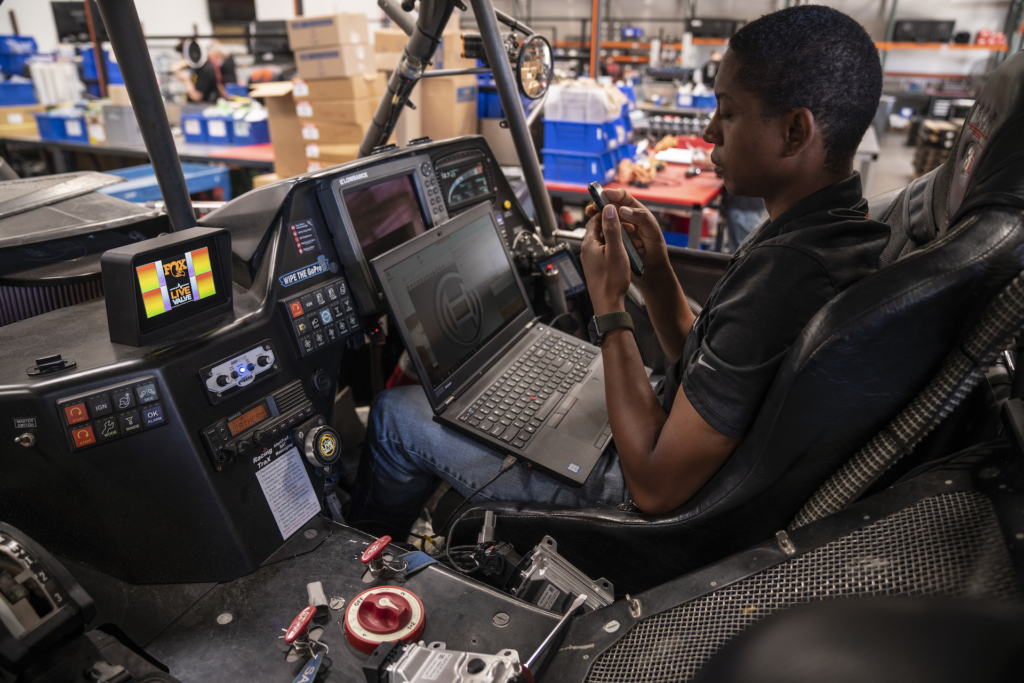
“The ADG team’s charter is to support the development of advanced suspension systems within the organization and investigate/implement new technologies that will be strategically important 3-5 years out,” he added. “We often do this by creating technology demonstrators, prototypes and proof of concepts to validate ideas through testing and application.
Read “Tuning Is The Key To A Well-Rounded Shock Package“
“By quickly proving ideas in the lab and then applying them to vehicles for testing, we can evaluate the potential of a given technology via actual use cases. The technologies that rise to the top through this process are further developed to a state where they can be handed-off to application engineering teams to productize for a given vehicle platform/customer.”
From podium to showroom
This rigorous testing process is not complete until we have improved in at least one or more of our key target areas (and without sacrificing in any other area) or have proven the product’s viability through race results. The development cycle may go through numerous product revision and testing phases, including involvement of additional racers, before it is deemed a viable product.
Once proven, it can then be released for production. Availability may be expanded for further adoption in race applications with the most beneficial RAD-developed and proven products, technologies, and components trickling their way into our Aftermarket and OE product lines.
// ridefox.com
- Supercharged XC and Gravel with the FOX 34SC and 32TC

- Jenn Jackson Rides the New FLOAT SL | Video

- Challenge Every Trail with the FOX 36 and FOX 34

- Unlock Your Enduro Racing Potential with the FOX 38, FLOAT X2 and DHX2
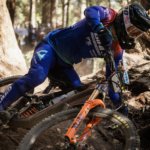
- Go West! A 2023 Overland Expo Pictorial
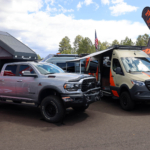
- Forged in Johnson Valley: 2023 King of the Hammers Edition Bronco
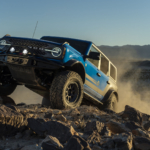
Click here for the latest corporate news.